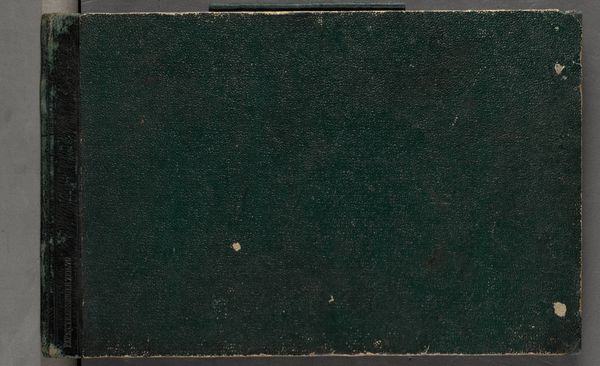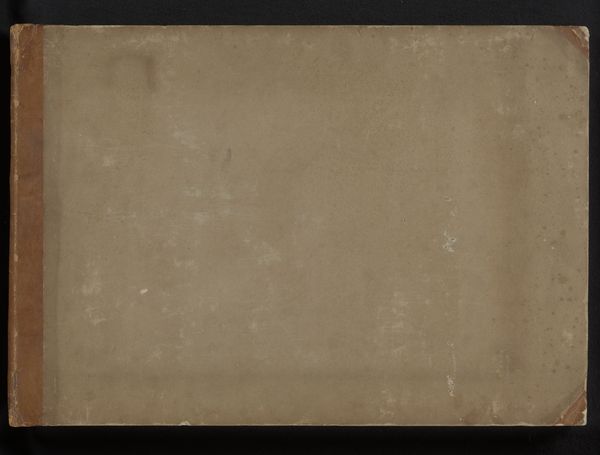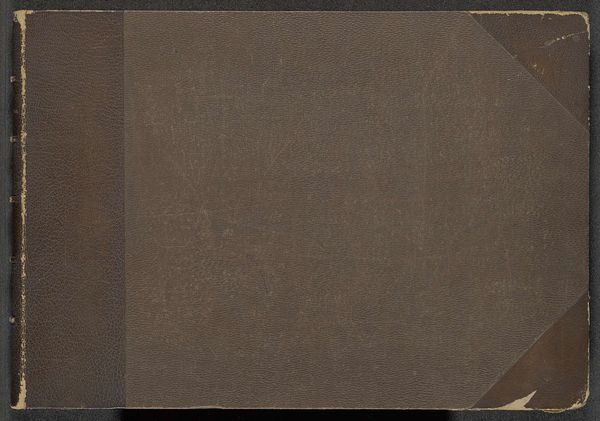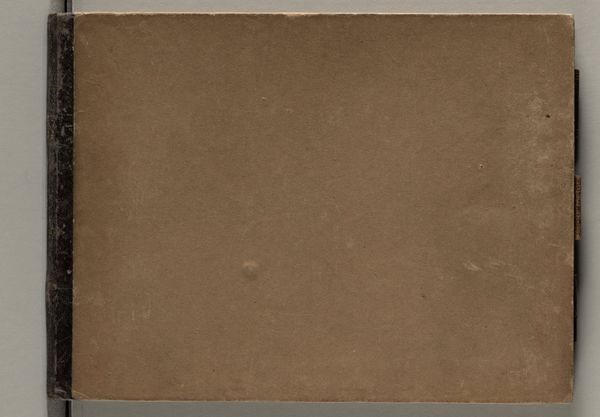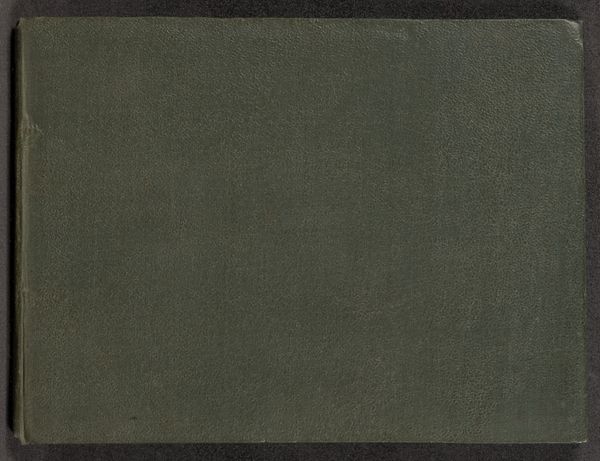
drawing, paper
#
drawing
#
16_19th-century
#
paper
#
german
Copyright: Public Domain
Curator: It’s hard to believe so much thought and potential could be bound in such an understated volume. What are your first thoughts about this "Skizzenbuch," or Sketchbook, from 1856, crafted by the German artist Ludwig Metz? Editor: My immediate reaction is one of intimacy. A sketchbook always feels personal, doesn’t it? There's a worn quality to its cover, hinting at its past journeys and the ideas it has quietly held. Curator: Exactly! The object itself, the paper, the binding, tell a silent story of artistic production. What sort of paper was being made in Germany at that time? What dyes made this blue? Were they using a machine to stitch this cover? These considerations impact not just the artifact's physical presence, but also its value. Editor: That's an interesting way to look at it. I’m more interested in the social context and the potential contents of this book. Sketchbooks offer insight into an artist's working methods, their evolution, and the historical movements or societal events that could have influenced the hand that sketched within. How does this sketchbook tie into Germany at this moment? Did it play a part in crafting an independent German visual language? Curator: I suspect that studying the materials and labor would suggest it's more accessible than we assume; perhaps not aimed solely at an elite clientele. The repeated use also hints to artistic production as work. A lot of material and effort went into the sketches bound within this object. Editor: Do we know the subjects of Metz’s sketches, and their symbolic content? How much can we discover about Metz's influences? Did his sketches relate to particular movements or ideas about nationhood in the 19th century? This all contributes to our understanding of not only the artifact, but of German society and self-perception. Curator: It’s amazing that so many questions can emerge from something that is, ostensibly, just an everyday object. Editor: Precisely! Everyday objects contain and are contained by broader forces of culture. It just waits for us to release its voice.
Comments
No comments
Be the first to comment and join the conversation on the ultimate creative platform.

